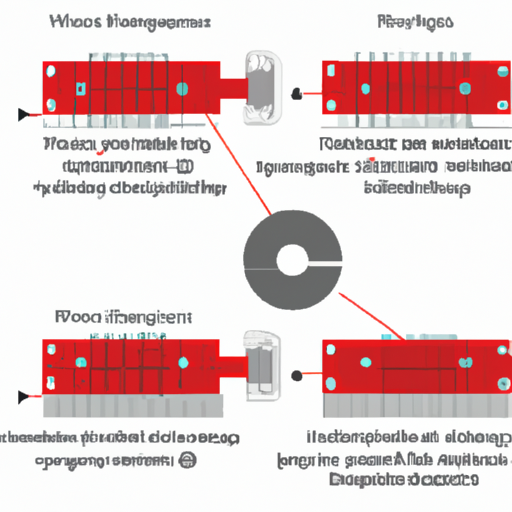What industries are the application scenarios of high-power resistors included in?
The Evolution of Renewable Energy: A Path Towards a Sustainable Future
I. Introduction
Renewable energy refers to energy derived from natural sources that are replenished at a faster rate than they are consumed. This includes solar, wind, hydro, biomass, and geothermal energy. As the world grapples with the pressing challenges of climate change, the importance of renewable energy has never been more pronounced. Transitioning to renewable energy sources is crucial for reducing greenhouse gas emissions, enhancing energy security, and fostering sustainable economic growth. This article will explore the historical context of energy sources, the various types of renewable energy, the role of technology, economic implications, global perspectives, future trends, and ultimately, the path towards a sustainable future.
II. Historical Context of Energy Sources
A. Traditional Energy Sources: Fossil Fuels and Their Impact
For centuries, fossil fuels—coal, oil, and natural gas—have been the backbone of global energy consumption. The Industrial Revolution marked a significant increase in fossil fuel usage, leading to unprecedented economic growth. However, this reliance on fossil fuels has come at a steep environmental cost. The burning of fossil fuels releases significant amounts of carbon dioxide (CO2) and other greenhouse gases into the atmosphere, contributing to global warming and climate change.
B. The Emergence of Renewable Energy
The quest for cleaner energy alternatives began in earnest in the late 20th century. Early uses of renewable energy can be traced back to ancient civilizations that harnessed wind and water for power. However, it wasn't until the 1970s energy crisis that serious investments were made in renewable technologies. Technological advancements in solar panels, wind turbines, and hydroelectric systems have since paved the way for modern renewable energy solutions.
III. Types of Renewable Energy
A. Solar Energy
Solar energy harnesses sunlight through photovoltaic cells in solar panels, converting it into electricity. The benefits of solar energy are manifold: it is abundant, sustainable, and can be deployed at various scales—from small residential systems to large solar farms. However, challenges such as high initial costs, land use, and energy storage remain.
B. Wind Energy
Wind energy is generated by converting the kinetic energy of wind into mechanical power through wind turbines. Wind farms can be located onshore or offshore, with offshore wind farms often yielding higher energy outputs. While wind energy is clean and renewable, it faces limitations such as variability in wind patterns and potential impacts on wildlife.
C. Hydropower
Hydropower generates electricity by harnessing the energy of flowing water, typically through dams. It is one of the oldest and most widely used forms of renewable energy. While hydropower is efficient and reliable, it raises environmental concerns, particularly regarding ecosystem disruption and water quality.
D. Biomass and Biofuels
Biomass energy is derived from organic materials, such as plant and animal waste. It can be converted into biofuels, which serve as alternatives to fossil fuels. Biomass plays a dual role in energy production and waste reduction, but its sustainability depends on responsible sourcing and land use practices.
E. Geothermal Energy
Geothermal energy taps into the Earth's internal heat to generate electricity or provide direct heating. Geothermal systems can be highly efficient and have a small land footprint. However, their potential is geographically limited, and initial development costs can be high.
IV. The Role of Technology in Renewable Energy
Technological innovations are crucial for the advancement of renewable energy. Energy storage solutions, such as advanced batteries, are essential for managing the intermittent nature of solar and wind energy. Smart grid technology enhances energy distribution efficiency, allowing for better integration of renewable sources into existing power systems. Additionally, artificial intelligence and data analytics are increasingly being used to optimize energy consumption and predict demand, further enhancing the viability of renewable energy.
V. Economic Implications of Renewable Energy
The transition to renewable energy has significant economic implications. The renewable energy sector has become a major source of job creation, with millions of jobs in manufacturing, installation, and maintenance. Furthermore, the cost of renewable energy technologies has plummeted in recent years, making them competitive with fossil fuels. Government policies and incentives, such as tax credits and subsidies, play a vital role in promoting renewable energy adoption and driving investment in clean technologies.
VI. Global Perspectives on Renewable Energy
A. Case Studies of Countries Leading in Renewable Energy Adoption
Countries like Germany and China are at the forefront of the renewable energy revolution. Germany's Energiewende (energy transition) policy aims to shift the country towards a sustainable energy system, significantly increasing the share of renewables in its energy mix. Meanwhile, China has emerged as a global leader in solar and wind energy investment, driving down costs and increasing capacity.
B. Challenges Faced by Developing Countries
While many developed nations are making strides in renewable energy adoption, developing countries face unique challenges. Limited access to financing, inadequate infrastructure, and political instability can hinder the transition to renewable energy. However, with international support and investment, these countries can leapfrog traditional energy systems and embrace sustainable alternatives.
C. International Agreements and Collaborations
Global initiatives, such as the Paris Agreement, aim to unite countries in the fight against climate change. These agreements encourage nations to set ambitious targets for reducing greenhouse gas emissions and transitioning to renewable energy sources. Collaborative efforts are essential for sharing technology, knowledge, and resources to achieve a sustainable energy future.
VII. Future Trends in Renewable Energy
A. Predictions for Renewable Energy Growth
The future of renewable energy looks promising, with predictions indicating continued growth in capacity and investment. As technology advances and costs decrease, renewable energy is expected to become the dominant source of electricity generation worldwide.
B. Emerging Technologies
Innovative technologies, such as floating solar farms and advanced wind turbines, are set to revolutionize the renewable energy landscape. Floating solar farms can be deployed on bodies of water, reducing land use and increasing efficiency. Advanced wind turbines are designed to capture more energy at lower wind speeds, expanding the potential for wind energy generation.
C. The Role of Public Awareness and Education
Public awareness and education are critical in promoting renewable energy adoption. As individuals and communities become more informed about the benefits of renewable energy, they are more likely to support policies and initiatives that foster a sustainable energy future.
VIII. Conclusion
The transition to renewable energy is not just an environmental imperative; it is a pathway to a sustainable future. By embracing renewable energy sources, we can reduce our carbon footprint, create jobs, and foster economic growth. It is essential for individuals, businesses, and governments to take action, invest in clean technologies, and support policies that promote renewable energy adoption. Together, we can build a sustainable future powered by renewable energy, ensuring a healthier planet for generations to come.
IX. References
1. International Energy Agency (IEA). (2021). World Energy Outlook 2021.
2. REN21. (2021). Renewables 2021 Global Status Report.
3. U.S. Department of Energy. (2020). Solar Energy Technologies Office.
4. Global Wind Energy Council. (2021). Global Wind Report 2020.
5. International Renewable Energy Agency (IRENA). (2021). Renewable Power Generation Costs in 2020.
This blog post provides a comprehensive overview of the evolution of renewable energy, highlighting its importance, types, technological advancements, economic implications, global perspectives, and future trends. By understanding the significance of renewable energy, we can collectively work towards a sustainable future.






